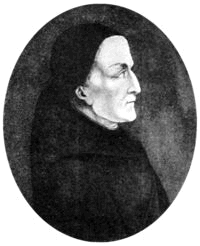
Temperaments and tuning systems
TC/LB Temperament
TC Monza Temperament
Vallotti
Young
Neidhardt "Grosse Stadt" (1732)/ "Kleine Stadt" (1724)
Bibliography
Temperament
Links
A simple tuning based on Vallotti but with the fifths A-E and E-B set slightly wider than 1/6-comma. Good for use with string players and used by London Baroque for the last 10 years.
Method
Set tenor A at 415Hz
1. Tune Ten A to Ten F wide of pure (just over 3 beats per second)
2. Temper the 5th A-E 1/12 narrow (an equal tempered 5th)
3.
From F tune five perfect 5ths, F-Bb, Bb-Eb, Eb-G#, G#-C# and F-C
4.
Temper six of the remaining 5ths 1/6th comma narrow of pure, ie C-G,
G-D, D-A, E-B, B-F#
5.
The last fifth (F#-C#) should now be an equally tempered 5th, ie 1/12
comma narrow.
Cent
deviation values (approx.) for use with a Tuning machine;
|
A |
Bb |
B |
C |
C# |
D |
Eb |
E |
F |
F# |
G |
G# |
|
0 |
+2 |
-2 |
+6 |
-4 |
+2 |
0 |
0 |
+4 |
-4 |
+4 |
-2 |
An irregular tuning for 18th century Italian music based on contemporary tuning systems and specially devised for a recording of Monza's harpsichord music. To tune this temperament, the fifths F#-C#, Eb-Bb, Bb-F and F-C are set pure and the fifths C#-G# and G#-Eb set wide by 1/10 comma. The remaining fifths are a narrow by 1/5 comma.
Cent
deviation values (approx.) for use with a Tuning machine;
|
A |
Bb |
B |
C |
C# |
D |
Eb |
E |
F |
F# |
G |
G# |
|
0 |
+4 |
-5 |
+7.5 |
-5.5 |
+2.5 |
+2 |
-2.5 |
+6 |
-7.5 |
+5 |
-2 |
Vallotti (mid 18th century)

Francesco Antonio Vallotti (1697-1780). Italian composer and theorist. This elegant keyboard tuning system is recorded in his Delia Scienza teorica, e pratica, delta modema Musica. (The first volume of which was published in Padua in 1779 while the remaining three books had to wait until 1950 -mod. ed. Trattato delta modema Musica, Padua, 1950). The temperament was first reported, somewhat opaquely, by Vallotti's colleague and fellow theorist in Padua, Giuseppe Tartini in his Trattato di Musica secondo la vera Scienta deli Armonia (Padua, 1754), p. 100. Although many (myself among them) feel this temperament is misused in the perfomance of Baroque music today - see Ross Duffin's article 'Why I hate Vallotti (or is it Young)', it is still very easy to tune and an excellent starting point for those new to tuning unequal temperaments. To tune this temperament, set the fifths F-Bb-Eb-G#-C#-F#-B pure and then temper the rest by 1/6 of a Pythagorean comma.
Cent
deviation values (approx.) for use with a Tuning machine;
|
A |
Bb |
B |
C |
C# |
D |
Eb |
E |
F |
F# |
G |
G# |
|
0 |
+6 |
-4 |
+6 |
0 |
+2 |
+4 |
-2 |
+8 |
-2 |
+4 |
+2 |
Young Temperament (1800) [=Shifted Vallotti]

Thomas Young (1773-1829). Famous English polymath and scientific investigator. Recently described by Andrew Robinson as “the last man who knew everything” (Robinson, A. The Last Man Who Knew Everything, Oxford, 2007). Among his many achievements he proved Newton wrong, explained how we see and deciphered the Rosetta Stone. His now famous temperament is described in "Of the temperament of musical intervals." Philosophical Transactions of the Royal Society of London for the year 1800, pp 143-146. London, The Royal Society, 1800. It is sometimes referred to as 'Young II'. To tune this temperament, set the fifths C-F-Bb-Eb-G#-C#-F# pure and temper the rest by 1/6 of a Pythagorean comma.
Cent
deviation values (approx.) for use with a Tuning machine;
|
A |
Bb |
B |
C |
C# |
D |
Eb |
E |
F |
F# |
G |
G# |
|
0 |
+2 |
-4 |
+6 |
-4 |
+2 |
0 |
-2 |
+4 |
-6 |
+4 |
-2 |
Neidhardt "Grosse Stadt" (1732)/ "Kleine Stadt" (1724)
A useful temperament for Bach’s later music. It has three pure fifths (G#-Eb, Eb-Bb, E-B), and nine tempered fifths. Three of the tempered fifths are narrowed by 1/6 of the Pythagorean comma (C-G, G-D, D-A) and the remaining six by 1/12 of the Pythagorean comma (A-E, B-F#, F#-C#, C#-G#, Bb-F, F-C).
Cent deviation values (approx.) for use with a Tuning machine;
|
A |
Bb |
B |
C |
C# |
D |
Eb |
E |
F |
F# |
G |
G# |
|
0 |
+6 |
+2 |
+6 |
+2 |
+2 |
+4 |
0 |
+6 |
+2 |
+4 |
+2 |
Johann Georg Neidhardt, was born in Bernstadt, Silesia in about 1680 and died in Königsberg on Jan 1st, 1739. He was Kapellmeister in Königsberg from 1720 until his death. He he took part in a tuning competition in Jena with J.N. Bach, the university organist and cousin of J.S. Bach. J.N. Bach set his temperament by ear (and was judged the winner) while Neidhardt used a monochord. Neidhardt advocateed circulating temperaments which favour the more commonly used keys whilst also accommodating the more distant and less diatonic keys. He formulated temperaments to suit different situations (e.g. for a village, a town, a city) and recommended equal temperament for use at court.
Modern practical guides I have found the useful include:
G. C. Klop: Harpsichord Tuning - Course Outline (Garderen, 1974)
John Meffen: A Guide to Tuning Musical Instruments (Newton Abbot, 1982)
Martin B. Tittle: A Performer's Guide through Historical Keyboard Tunings (Ann Arbor, 1987)
Mark Lindley: ‘Instructions for the clavier diversely tempered’, Early Music v (1977), 18
Edwin Meier: Historische temperaturen (Mark Vogel, n.d.)
Charles A.Padgham: The well-tempered organ (Positif Press, Oxford, 1986)
G.C.Klop: Harpsichord Tuning (Utrecht, 1974)
Richard Clayson and Andrew Garrett: Tuning Compass and booklet. Lyminge, 1980.
For another contemporary practical guide to tuning keyboard instruments see: John Wilson Roger North on Music (Novello, 1959), Chapter 10, 'The tuning of Clavicall Instruments', p.203ff.
Primary Sources:
A. Schlick : Spiegel der Orgelmacher und Organisten (Speyer,1511/R); ed. E. Flade (Mainz, 1932); Eng. trans. in Bibliotheca organologica, cxiii (Buren, 1980)
J. Denis : Traité de l’accord de l’éspinette (Paris, 1643, 2/1650/R; Eng trans., 1987)
A. Werckmeister : Orgel-Probe (Frankfurt and Leipzig, 1681, 2/1698/R1970 as Erweiterte und Verbesserte Orgel-Probe, 5/1783). German only.
J. Wilson, ed.: Roger North on Music (London, 1959), 203. Chapter 10, "The Tuning of Clavicall instruments."
T. McGeary : ‘Early Eighteenth-Century English Harpsichord Tuning and Stringing’, English Harpsichord Magazine, iii/2 (1982), 18–22. Available from http://www.harpsichord.org.uk/EH/Vol3/No2/stringing.pdf
Thomas McGeary, "German-Austrian Keyboard Temperaments and Tuning Methods, 1770-1830: Evidence from Contemporary Sources", Journal of the American Musical Instrument Society, vol. 15 (1989)
A good general introduction is Stephen Bicknell’s Temperament: A Beginner's Guide. Web article available at http://www.albany.edu/piporg-l/tmprment.html.
More detailed information see the Grove article on 'Temperament' and:
Mark Lindley: ‘Pythagorian intonation and the rise of the triad’, RMA Research Chronicle xvi (1980), 4
Bruce Haynes: 'Beyond temperament: non-keyboard intonation in the 17th and 18th c.' Early Music xix (1991), 356.
Patrizzio Barbieri: 'Violin intonation: an historical survey' Early Music xix (1991), 69.
A. Corona-Alcade : ‘“You Will Raise a Little Your Fret”: an Equivocal Instruction by Luis Milàn?’, GSJ, xliv (1991), 2–45
For Bradley Lehman’s Bach tuning see: http://www.larips.com
For comprehensive surveys (but tough going):
For the best survey of historical sources, J.M. Barbour : Tuning and Temperament: a Historical Survey (East Lansing, MI,1951/R, 2/1953)
Claudio Di Veroli’s very useful but long out of print Unequal
Temperaments and their Role in the Performance of Early Music (Buenos Aires,
1978) has been prefaced by Unequal Temperaments: Theory, History and Practice
(Scales, tuning and intonation in musical performance) ( 2009) an ebook only
available online from http://temper.braybaroque.ie.
O.H. Jorgensen : Tuning the Historical Temperaments by Ear (diss., Northern Michigan U., 1977)
Temperament (Edgar Hunt Article)
Bach's Tuning, B Lehman
Claudio di Veroli, Unequal
Temperaments
Temperament: A
Beginner's Guide
Graphic
view of Historical Temperaments
Harpsichord
Tuning & Repair
Lehmann's
Temperament Calculator
Top of page